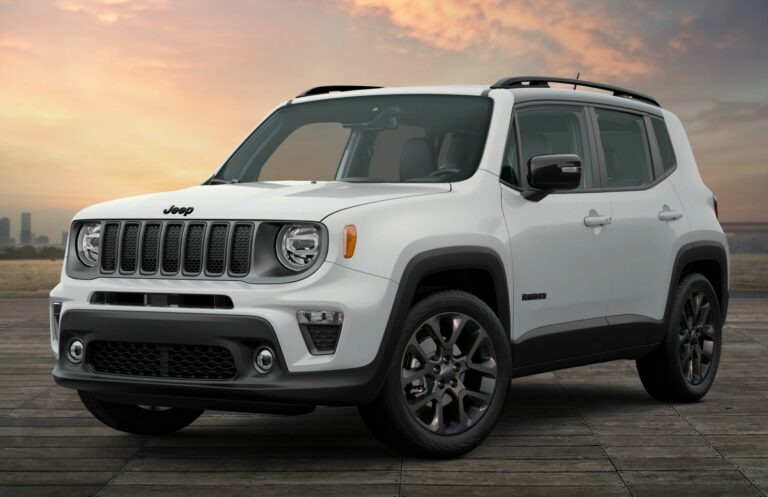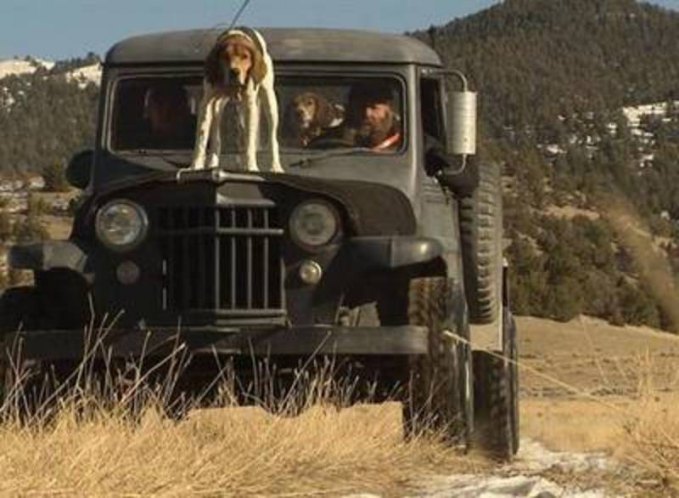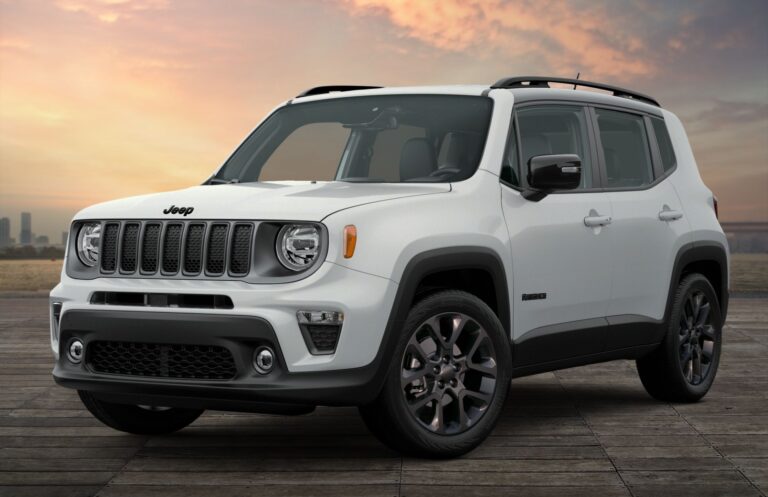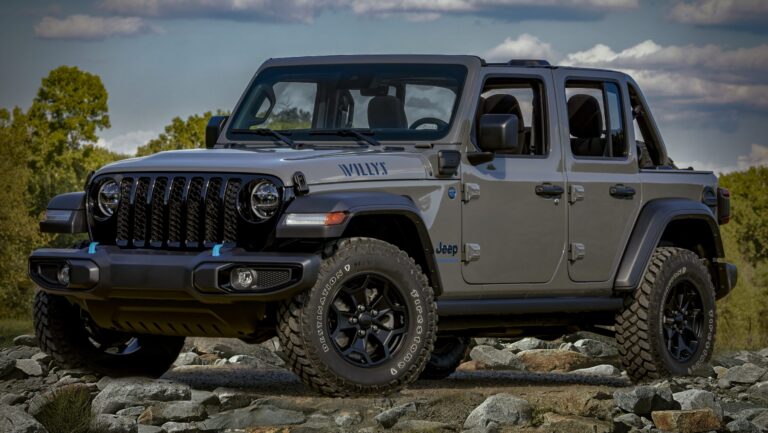How Much Oil Does A 2012 Jeep Wrangler Take: Your Comprehensive Guide
How Much Oil Does A 2012 Jeep Wrangler Take: Your Comprehensive Guide jeeps.truckstrend.com
The iconic Jeep Wrangler, especially the 2012 model year, holds a special place in the hearts of off-road enthusiasts and daily drivers alike. Known for its rugged capability and distinctive style, maintaining this vehicle properly is paramount to its longevity and performance. One of the most fundamental aspects of vehicle maintenance, often overlooked or misunderstood, is understanding its oil requirements. Knowing "How Much Oil Does A 2012 Jeep Wrangler Take" is not just a trivial detail; it’s a critical piece of information that directly impacts your engine’s health, efficiency, and your wallet in the long run.
This comprehensive guide will demystify the oil needs of your 2012 Jeep Wrangler, providing you with all the essential information to ensure your beloved vehicle runs smoothly for years to come. From the exact oil capacity and type to the nuances of oil changes and common challenges, we’ve got you covered.
How Much Oil Does A 2012 Jeep Wrangler Take: Your Comprehensive Guide
Understanding the 2012 Jeep Wrangler Engine and Its Oil Needs
The 2012 model year marked a significant upgrade for the Jeep Wrangler. It saw the introduction of the new 3.6-liter Pentastar V6 engine, replacing the older 3.8-liter V6. This change brought a substantial boost in horsepower and torque, along with improved fuel efficiency. Modern engines like the Pentastar are precision-engineered and require specific lubricants to perform optimally and prevent premature wear.
The Pentastar engine, a DOHC (Dual Overhead Cam) design with variable valve timing (VVT), is designed to operate with specific oil viscosity and quality to protect its intricate components. Using the wrong type or amount of oil can lead to a cascade of problems, from reduced fuel economy and increased emissions to severe engine damage.
The Key Answer: Oil Capacity for the 2012 Jeep Wrangler (3.6L Pentastar)
For the 2012 Jeep Wrangler equipped with the 3.6-liter Pentastar V6 engine, the official oil capacity is 6 quarts (approximately 5.6 liters).
It is crucial to adhere to this capacity. While a slight deviation might not cause immediate catastrophic failure, consistent overfilling or underfilling can lead to significant issues over time.
Why the Correct Oil Capacity is Crucial
Maintaining the precise oil level in your 2012 Jeep Wrangler is more critical than many owners realize. The engine oil serves multiple vital functions:

- Lubrication: It creates a protective film between moving parts, reducing friction and wear.
- Cooling: It absorbs heat from engine components and dissipates it as it circulates.
- Cleaning: It carries away contaminants like dirt, sludge, and metallic particles to the oil filter.
- Sealing: It helps seal the combustion chambers, improving compression.
- Corrosion Protection: It prevents rust and corrosion on internal engine parts.

Here’s what happens if the oil level is incorrect:

Underfilling (Too Little Oil):
- Insufficient Lubrication: Parts rub against each other without adequate oil film, leading to increased friction, heat, and rapid wear.
- Overheating: The engine struggles to dissipate heat effectively, leading to elevated operating temperatures.
- Engine Damage: Components like bearings, camshafts, and cylinder walls can be severely damaged, potentially leading to costly engine failure.
- Oil Pressure Drop: Low oil levels can cause the oil pump to suck air, leading to a sudden drop in oil pressure and triggering the oil warning light.
-
Overfilling (Too Much Oil):
- Aeration/Foaming: The crankshaft, which spins at high RPMs, can dip into the excess oil, churning it into a frothy mixture. This aerated oil has reduced lubricating properties.
- Increased Pressure: Excess oil can create higher pressure within the crankcase, potentially blowing out seals and gaskets (e.g., rear main seal, valve cover gaskets).
- Catalytic Converter Damage: Overfilled oil can be forced into the PCV (Positive Crankcase Ventilation) system, leading to oil being burned in the combustion chamber. This can foul spark plugs and, more seriously, damage the catalytic converter, which is an expensive repair.
- Reduced Efficiency: Excess oil can create drag on the crankshaft, slightly reducing engine efficiency and potentially leading to minor power loss.
Checking Your Oil Level: A Step-by-Step Guide
Regularly checking your oil level is a simple yet effective way to prevent problems. For your 2012 Jeep Wrangler, follow these steps:
- Park on a Level Surface: Ensure your vehicle is on flat ground to get an accurate reading.
- Engine Warm, Then Off: Drive the vehicle until it reaches normal operating temperature. Then, shut off the engine and wait 5-10 minutes. This allows the oil to drain back into the oil pan.
- Locate the Dipstick: Open the hood. On the 3.6L Pentastar engine, the oil dipstick typically has a yellow handle and is located towards the front or side of the engine.
- Remove and Wipe: Pull the dipstick out completely. Wipe it clean with a lint-free cloth or paper towel.
- Reinsert Fully: Push the dipstick back into its tube until it’s fully seated.
- Remove and Read: Pull the dipstick out again and observe the oil level. There are usually two marks (holes, notches, or a cross-hatched area) indicating the "full" and "add" or "low" levels. The oil level should ideally be between these two marks, preferably closer to the "full" mark.
- Add Oil (If Needed): If the oil level is low, add oil in small increments (e.g., half a quart at a time), wait a few minutes for it to settle, and recheck the level until it’s within the proper range. Be careful not to overfill.
Choosing the Right Oil for Your 2012 Jeep Wrangler
Beyond just the quantity, the quality and type of oil are equally important. For the 3.6L Pentastar engine in your 2012 Jeep Wrangler, the manufacturer recommends:
- Viscosity: SAE 5W-20. This viscosity provides excellent cold-start flow and maintains proper protection at operating temperatures. In very hot climates or under severe duty, some sources might mention 5W-30 as an alternative, but 5W-20 is the primary recommendation. Always consult your owner’s manual for definitive recommendations based on your specific region and driving conditions.
- Oil Type: Full Synthetic or Synthetic Blend. While conventional oil might meet some basic requirements, the Pentastar engine, with its tight tolerances and VVT system, significantly benefits from the superior protection, stability, and cleaning properties of synthetic oil. Synthetic oils perform better in extreme temperatures and maintain their viscosity longer.
- API Service Classification: Look for oils with the latest API (American Petroleum Institute) service classification (e.g., API SN, API SP). These classifications indicate the oil meets current industry standards for engine protection.
- Chrysler Specification: Most importantly, the oil must meet Chrysler Material Standard MS-6395. This specification ensures the oil has been tested and approved by Chrysler (now Stellantis) for use in their engines, specifically for the Pentastar. Always look for this on the oil bottle label.
Oil Change Intervals for the 2012 Jeep Wrangler
FCA (Fiat Chrysler Automobiles, now Stellantis) recommends oil change intervals for the 2012 Wrangler (3.6L Pentastar) based on the Oil Change Indicator System. This system monitors driving conditions and determines the optimal time for an oil change, typically up to 10,000 miles (16,000 km) or 12 months, whichever comes first.
However, these are general guidelines. Factors that can necessitate more frequent oil changes include:
- Severe Driving Conditions: Frequent short trips (less than 10 miles), stop-and-go city driving, driving in dusty or sandy conditions (off-roading), towing heavy loads, or extended idling.
- Extreme Temperatures: Driving in very hot or very cold climates can put additional stress on the oil.
- Off-Roading: The demands of off-road driving, including steep climbs, water crossings, and heavy articulation, can accelerate oil degradation.
If you frequently engage in these types of driving, consider changing your oil and filter every 5,000 miles or 6 months.
The DIY Oil Change vs. Professional Service
Deciding whether to change your oil yourself or take it to a professional depends on your comfort level, tools, and time.
DIY Oil Change:
- Pros: Cost-effective, gives you control over oil and filter choice, satisfying.
- Cons: Requires basic tools (drain pan, wrench, oil filter wrench, funnel, jack stands/ramps), proper disposal of used oil, can be messy.
- Safety: Always use jack stands if lifting the vehicle. Ensure the vehicle is stable. Wear gloves and eye protection.
Professional Service:
- Pros: Convenient, quick, no mess for you, used oil disposal handled, potential for multipoint inspection.
- Cons: More expensive, less control over oil/filter brands (though you can request specific ones), potential for upselling.
Common Challenges and Troubleshooting Related to Oil Levels
- Oil Consumption: It’s normal for engines to consume a small amount of oil between changes. Excessive consumption (e.g., needing to add a quart every 1,000-2,000 miles) could indicate an issue like worn piston rings, valve seals, or PCV system problems.
- Oil Leaks: Common leak points on a 3.6L Pentastar can include the oil filter housing (a known issue on some models), valve covers, and the oil pan gasket. Address leaks promptly to prevent low oil levels and environmental contamination.
- Oil Warning Light: If your oil pressure warning light illuminates, stop driving immediately and check your oil level. Do not continue driving with low oil pressure, as it can cause catastrophic engine damage.
- Used Oil Disposal: Never pour used oil down the drain or into the trash. Take it to an auto parts store, service station, or local recycling center that accepts used motor oil.
Oil Change Cost Table for 2012 Jeep Wrangler (3.6L Pentastar)
This table provides an estimated breakdown of costs associated with an oil change for your 2012 Jeep Wrangler. Prices can vary significantly based on brand, location, and specific service provider.
| Item | Description | Estimated Cost (DIY) | Estimated Cost (Professional Service) | Notes |
|---|---|---|---|---|
| Engine Oil | 6 Quarts of SAE 5W-20 Full Synthetic Oil (MS-6395 compliant) | $30 – $60 | Included in Service | High-quality synthetic oil is recommended for the Pentastar engine. |
| Oil Filter | Cartridge-style filter (e.g., Mopar MO-339 or equivalent) | $8 – $20 | Included in Service | Always replace the oil filter with each oil change. |
| Labor | Mechanic’s time for oil change | $0 | $40 – $80+ | Varies widely by shop and region. Some quick lube places may offer lower prices but might use lower-quality oil. |
| Supplies (DIY) | Drain pan, funnel, rags, gloves | $5 – $15 (one-time) | N/A | Initial investment for tools if you don’t have them. |
| Used Oil Disposal | Recycling fee/service | Free (at most centers) | Included in Service | Always dispose of used oil responsibly. |
| Total Estimated Cost | $38 – $80 | $70 – $120+ | These are estimates. Always get a quote from your chosen professional service. |
Frequently Asked Questions (FAQ)
Q1: Can I use 5W-30 oil instead of 5W-20 in my 2012 Jeep Wrangler 3.6L?
A1: While 5W-20 is the primary recommendation, some owner’s manuals or service bulletins might allow 5W-30 under specific severe conditions or in certain regions. However, it’s generally best to stick to 5W-20, especially if it meets the MS-6395 specification, as it’s the viscosity the engine was primarily designed for. Using a different viscosity without specific manufacturer approval could affect fuel economy or engine longevity.
Q2: How often should I check my oil level?
A2: It’s a good practice to check your oil level at least once a month, or before any long road trip. If your vehicle has high mileage or you drive in demanding conditions, checking it more frequently (e.g., every few fuel fill-ups) is advisable.
Q3: What does the oil change indicator light mean on my dashboard?
A3: This light means your vehicle’s onboard computer has determined that an oil change is due based on driving conditions, mileage, and engine operating parameters. It’s an alert, not necessarily an emergency, but you should schedule an oil change soon.
Q4: Is synthetic oil really necessary for my 2012 Jeep Wrangler?
A4: While the owner’s manual might specify conventional or synthetic blend for some conditions, full synthetic oil is highly recommended for the 3.6L Pentastar engine. Its superior protection against wear, better performance in extreme temperatures, and longer lasting properties significantly benefit this modern engine and can extend its lifespan.
Q5: What should I do if I accidentally overfill my oil?
A5: If you’ve significantly overfilled (more than half a quart above the full mark), it’s best to drain the excess. Driving with too much oil can lead to foaming, seal damage, and potential catalytic converter issues. You can use a fluid extractor or carefully drain a small amount from the oil pan plug. If unsure, consult a mechanic.
Q6: Where is the oil filter located on a 2012 Wrangler with the 3.6L engine?
A6: The oil filter for the 3.6L Pentastar engine is a cartridge-style filter located on top of the engine, usually near the front-center or slightly towards the driver’s side, within a black housing. This location makes it relatively easy to access for replacement.
Conclusion
Understanding "How Much Oil Does A 2012 Jeep Wrangler Take" is a cornerstone of responsible vehicle ownership. With its robust 3.6-liter Pentastar V6 engine, your Wrangler requires precisely 6 quarts of SAE 5W-20 full synthetic oil that meets the Chrysler MS-6395 specification. Adhering to the correct capacity, using the right type of oil, and following recommended change intervals are all critical steps in ensuring your Jeep’s engine remains healthy, efficient, and ready for any adventure you throw its way. By taking a proactive approach to your Wrangler’s oil maintenance, you’re not just performing a task; you’re investing in the longevity and reliability of your beloved off-road companion.





